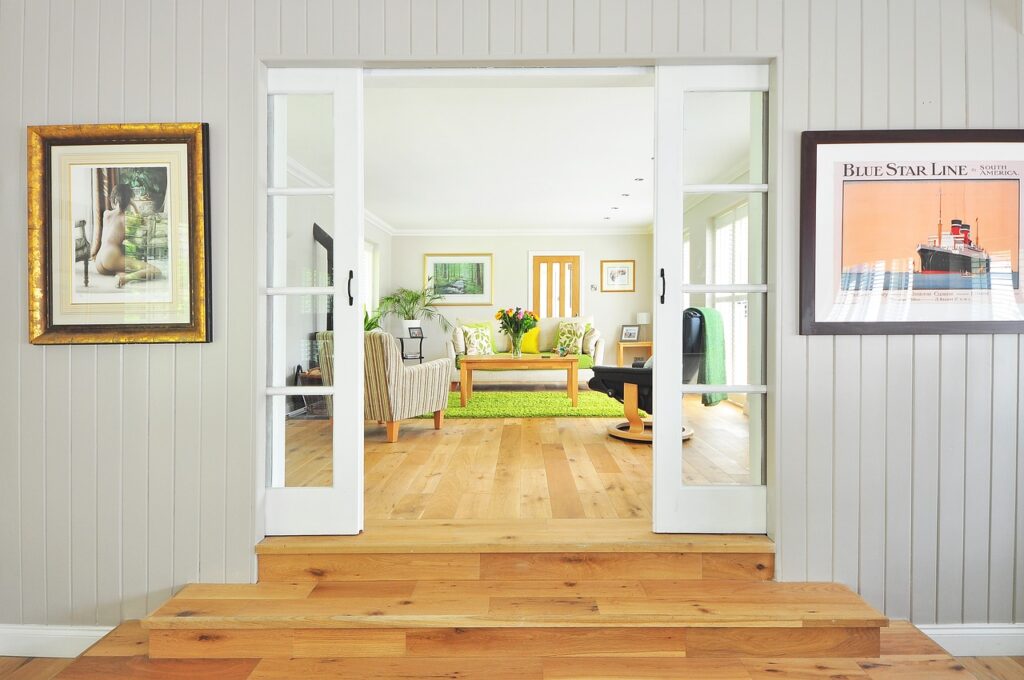Floor planning is both an art and a science. It involves the strategic arrangement of spaces within a home to maximize functionality, aesthetics, and comfort. A well-designed floor plan can improve the flow of movement, enhance the use of space, and create a harmonious living environment. In this article, we’ll delve into the science of floor planning, exploring 12 essential rules that can help you create the perfect layout for your home.
Rule 1: Understand the Purpose of Each Room
Explanation: Before diving into the design, it’s crucial to understand the purpose of each room. Knowing how each space will be used allows you to tailor the layout to meet specific needs. For example, a living room should accommodate seating for relaxation and entertainment, while a kitchen needs to be functional for cooking and food preparation.
Tips:
- Living Room: Consider the placement of furniture to facilitate conversation and interaction.
- Kitchen: Focus on the “work triangle” (sink, stove, and refrigerator) to optimize efficiency.
- Bedrooms: Prioritize privacy and comfort by placing bedrooms away from high-traffic areas.
Examples: A family-oriented home might prioritize a large, open-concept living area, while a professional couple may focus on a home office and a sleek, modern kitchen.
Rule 2: Prioritize Flow and Movement
Explanation: A good floor plan ensures smooth movement between rooms. This is achieved by minimizing obstacles and ensuring that pathways are intuitive and unobstructed. Flow is particularly important in high-traffic areas like hallways, entryways, and between the kitchen and dining room.
Tips:
- Hallways: Keep them wide enough to accommodate movement without feeling cramped.
- Entryways: Ensure they are welcoming and lead naturally into the main living spaces.
- Room Placement: Place rooms that require frequent interaction close together (e.g., kitchen and dining room).
Examples: In an open-plan design, furniture placement should guide movement naturally without blocking pathways.
Rule 3: Consider Scale and Proportion
Explanation: Scale and proportion are key elements in floor planning. The size of each room should be proportionate to the overall size of the house and should accommodate the intended furniture and activities. Avoid rooms that feel too cramped or too large for their purpose.
Tips:
- Living Rooms: Should be large enough to fit seating and entertainment units comfortably.
- Bedrooms: Ensure there’s enough space around the bed for ease of movement.
- Kitchens: Scale the size of the kitchen to the home’s overall square footage and the number of people who will use it.
Examples: A large kitchen with a small dining area may feel unbalanced, while a bedroom that’s too large can feel cold and uninviting.
Rule 4: Maximize Natural Light
Explanation: Natural light has a significant impact on the ambiance and mood of a space. Effective floor planning should take advantage of natural light by placing windows strategically and ensuring that rooms benefit from ample sunlight throughout the day.
Tips:
- Living Areas: Place living rooms and dining areas where they receive the most daylight.
- Bedrooms: Morning light can be pleasant, so consider placing bedrooms on the east side of the house.
- Kitchens: Natural light can make the space feel warm and inviting; place windows above sinks or work areas.
Examples: A well-lit living room with large windows can create an inviting space, while a dark, windowless room may feel unappealing.
Rule 5: Ensure Privacy Where Needed
Explanation: Privacy is essential in certain areas of the home, particularly bedrooms and bathrooms. Effective floor planning should ensure that these spaces are secluded from high-traffic areas and that windows and doors are positioned to maintain privacy.
Tips:
- Bedroom Placement: Position bedrooms away from the main living areas and street-facing sides of the home.
- Bathrooms: Ensure that bathrooms are not directly visible from living rooms or dining areas.
- Windows: Use frosted glass or curtains to maintain privacy while still allowing light.
Examples: A master bedroom suite at the end of a hallway provides privacy, while a bathroom off the kitchen might feel too exposed.
Rule 6: Balance Open and Closed Spaces
Explanation: Open floor plans are popular for their spaciousness and social benefits, but closed spaces also have their place. A well-designed home should balance open areas with private, enclosed rooms to meet various needs and preferences.
Tips:
- Open Concept: Use open spaces for communal areas like living rooms, kitchens, and dining rooms.
- Closed Spaces: Reserve closed rooms for bedrooms, offices, or other areas requiring privacy.
- Partial Walls or Dividers: Consider using partial walls or dividers to create distinct zones within open spaces without fully closing them off.
Examples: An open kitchen and living area can be great for entertaining, while a separate office or study provides a quiet place for work or reading.
Rule 7: Plan for Future Needs
Explanation: When designing a floor plan, it’s important to consider how your needs might change over time. Whether you’re planning for a growing family, aging in place, or future resale value, your layout should be flexible and adaptable.
Tips:
- Flexible Spaces: Design rooms that can easily be repurposed (e.g., a nursery that can become an office).
- Aging in Place: Consider single-story layouts or master bedrooms on the ground floor for accessibility.
- Resale Value: Opt for neutral, functional designs that will appeal to a broad range of buyers.
Examples: A playroom can be designed to transition into a guest bedroom as children grow older, or a home office can be converted into a bedroom if needed.

Rule 8: Optimize Storage Solutions
Explanation: Ample storage is a critical component of a functional floor plan. Well-planned storage solutions can help keep a home organized and clutter-free, enhancing both aesthetics and practicality.
Tips:
- Closets: Ensure each bedroom has a closet, and consider additional storage in hallways or entryways.
- Kitchen Storage: Include a pantry, ample cabinets, and possibly a kitchen island with storage.
- Built-Ins: Consider built-in shelving or cabinets to maximize space in living rooms, bathrooms, and bedrooms.
Examples: A walk-in closet in the master bedroom provides plenty of storage, while built-in bookshelves in the living room can be both functional and decorative.
Rule 9: Focus on Functionality
Explanation: While aesthetics are important, the functionality of a space should never be compromised. A well-designed floor plan should prioritize how spaces will be used daily, ensuring that they are practical and user-friendly.
Tips:
- Kitchen Layout: Prioritize functionality with a layout that supports cooking and food preparation, such as the work triangle.
- Living Room: Arrange furniture to facilitate conversation and easy access to the kitchen or dining area.
- Bathrooms: Ensure enough space for comfortable use, with storage for essentials like towels and toiletries.
Examples: A kitchen island can add both workspace and seating, enhancing the functionality of the kitchen, while a well-placed bathroom near the living area ensures convenience for guests.
Rule 10: Integrate Technology Seamlessly
Explanation: Modern homes often incorporate smart technology, from lighting and climate control to entertainment systems. A well-designed floor plan should account for the placement of technology to ensure seamless integration without compromising aesthetics.
Tips:
- Wiring and Outlets: Plan for ample outlets and consider where wiring for entertainment systems, speakers, and smart home devices will be placed.
- Lighting: Use smart lighting systems that can be controlled remotely or automatically adjusted based on time of day.
- Security Systems: Integrate security cameras and alarm systems into the design to avoid unsightly installations.
Examples: A centralized media closet can house all the necessary technology, keeping wires and devices out of sight while maintaining easy access for maintenance.
Rule 11: Consider the Impact of Furniture Placement
Explanation: Furniture placement plays a significant role in how a floor plan is experienced. The arrangement of furniture should complement the layout, enhancing the flow, functionality, and aesthetics of each room.
Tips:
- Living Room: Arrange seating to face focal points like a fireplace or television, with enough space for movement.
- Bedroom: Position the bed as the focal point, with nightstands and dressers placed for convenience and balance.
- Dining Room: Ensure that the table is centered and allows enough space for chairs to be pulled out comfortably.
Examples: A well-placed sofa can create a natural division between a living room and dining area in an open-plan layout, while a bed positioned opposite a window can maximize natural light and views.
Rule 12: Make Room for Personalization
Explanation: While following design rules is important, a floor plan should also reflect the personality and lifestyle of its occupants. Incorporate elements that make the space uniquely yours, whether through color, materials, or specific features.
Tips:
- Custom Features: Consider custom-built furniture, unique materials, or architectural details that reflect your style.
- Color Schemes: Choose a color palette that compliments the overall design while allowing for personal expression.
- Decor: Use art, textiles, and accessories to add warmth and personality to the space.
Examples: A custom-built bookshelf that fits a specific nook, or a statement color wall that adds character to the living room, can make the space feel truly personal and unique.
Conclusion
Designing the perfect floor plan is a balance of science and creativity. By following these 12 rules, you can create a layout that maximizes space, enhances flow, and meets the specific needs of your household. Remember that every home is unique, so while these guidelines are essential, don’t be afraid to tailor them to your personal preferences and lifestyle. A well-thought-out floor plan will not only improve the functionality of your home but also increase its comfort and appeal, creating a space that you’ll love for years to come.
Design Your Perfect Floor Plan with Red White & Blue Construction!
Thinking about redesigning your floor plan? Your search ends here! Embark on an exciting journey to transform your Lafayette, CA home into the living space you’ve always dreamed of. With Red White & Blue Construction, every inch of your floor plan becomes a harmonious blend of beauty and functionality. Imagine innovative layouts that maximize your space’s potential, creating a natural flow that enhances both comfort and style. Whether you’re looking to optimize your current floor plan or dreaming up something entirely new, we’re here to bring your vision to life.
Our stellar reputation across the Bay Area speaks to our unwavering commitment to excellence, precision, and the highest standards of craftsmanship. We’re not just licensed contractors; we’re the creative minds behind your ideal living space. With transparent pricing and a client-first approach, you’re not just planning a floor—you’re laying the foundation for a whole new lifestyle. Choose Red White & Blue Construction and turn your home into a masterpiece. Design Your Perfect Floor Plan and connect with us today!
Disclaimer
The materials available on this website are for informational and entertainment purposes only and not to provide advice. You should obtain advice concerning any particular issue or problem from a professional. You should not act or refrain from acting based on any content included in this site without seeking legal or other professional advice. The information presented on this website may not reflect the most current building developments. No action should be taken in reliance on the information on this website. We disclaim all liability concerning actions taken or not taken based on any or all of the contents of this site to the fullest extent permitted by law.





